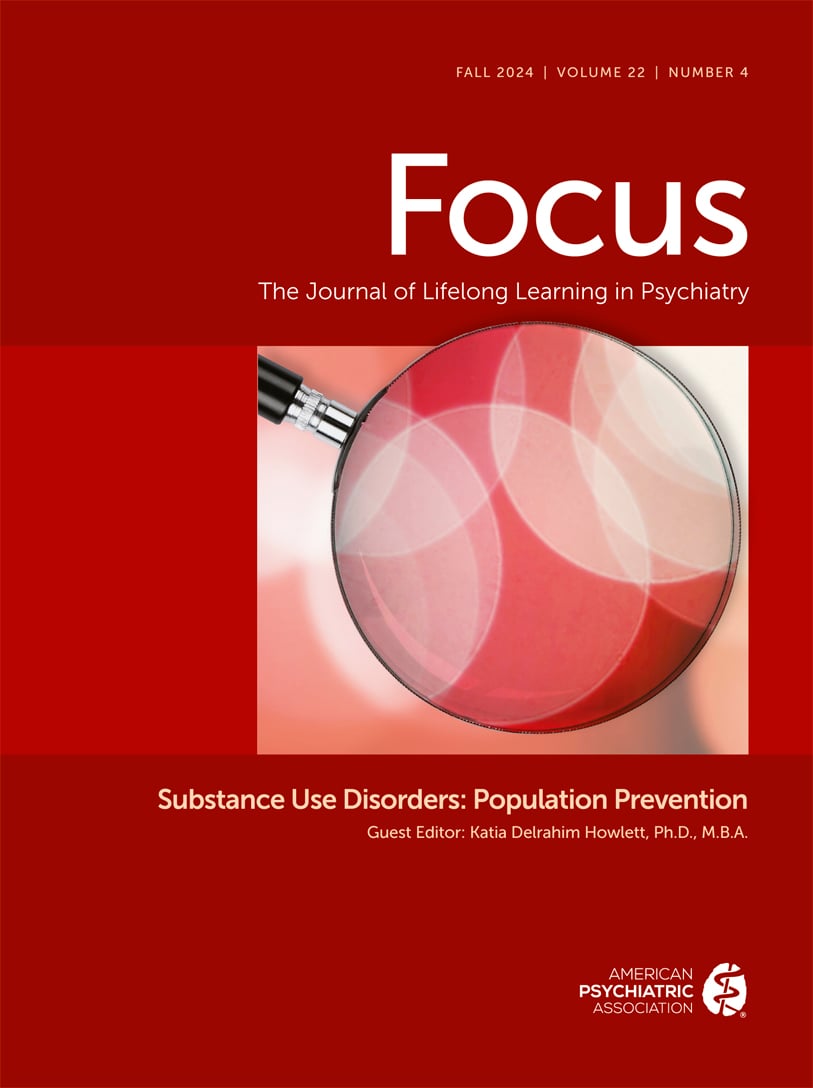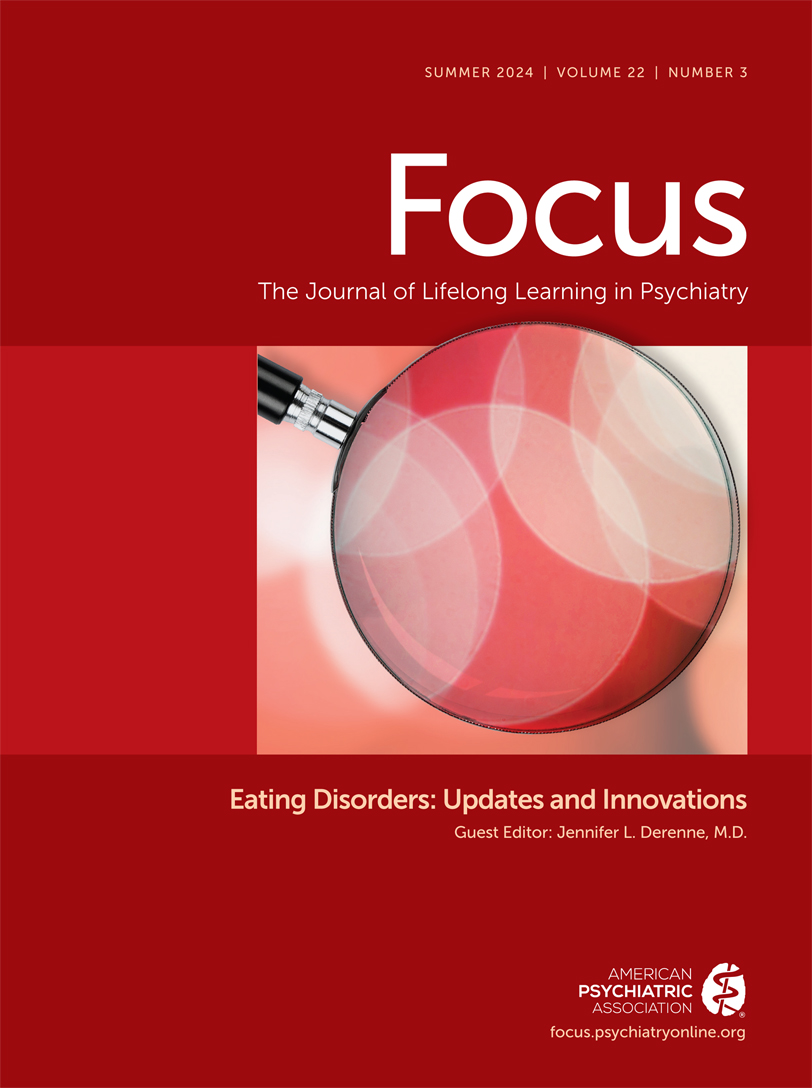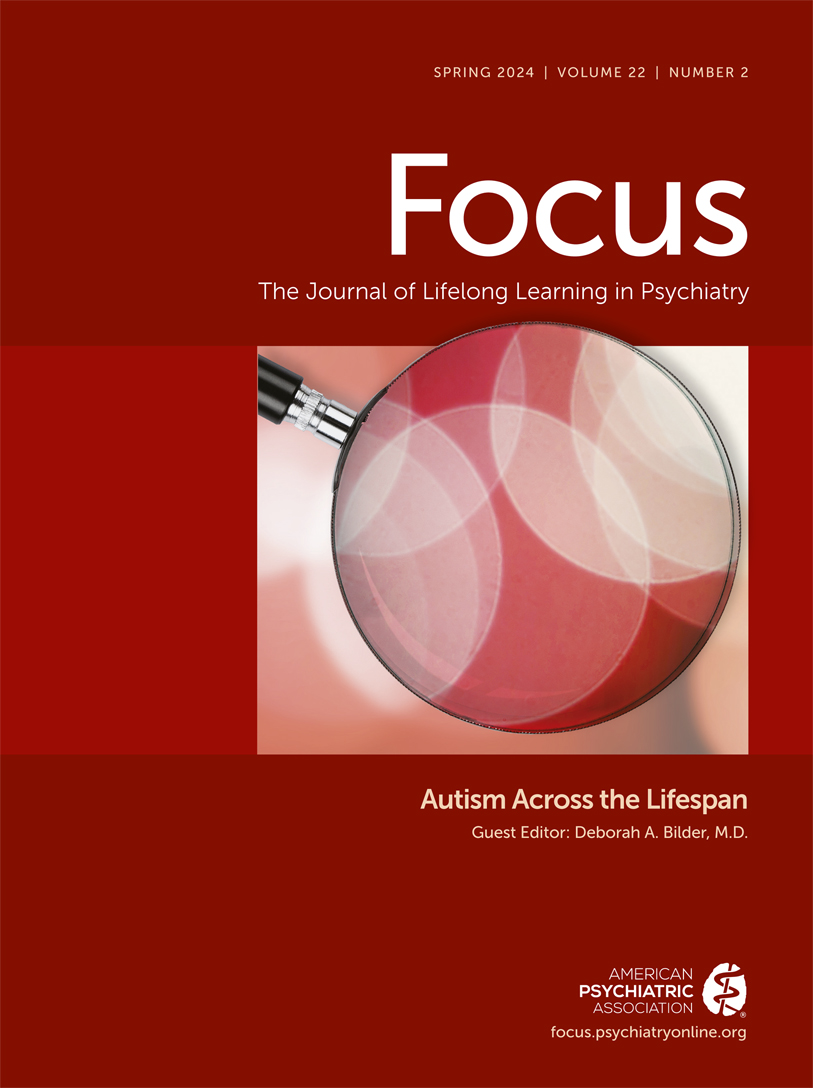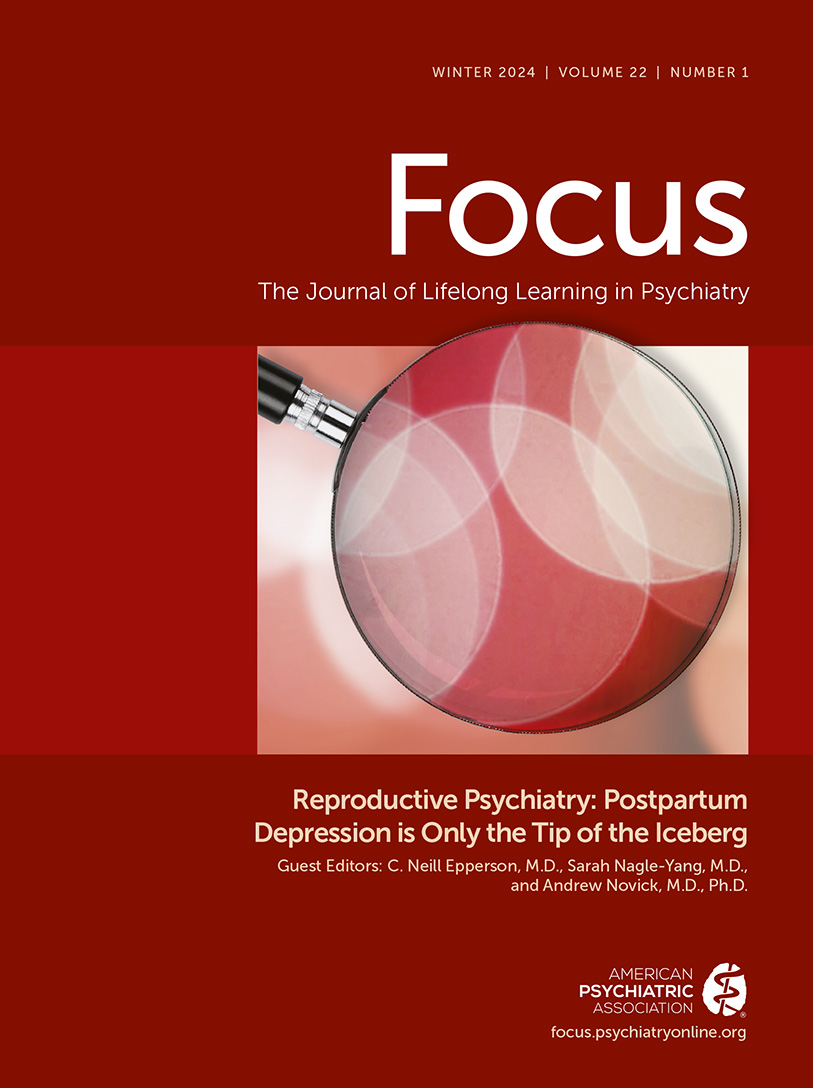Focus
- Volume 12
- Number 2
- April 2014
From the Guest Editor
Clinical Synthesis
Publication date: 01 April 2014
Pages127–135This clinical review summarizes the pharmacological characteristics, efficacy, and tolerability of asenapine, iloperidone, and lurasidone, the most recently approved antipsychotics in the treatment of schizophrenia.
https://doi.org/10.1176/appi.focus.12.2.127Publication date: 01 April 2014
Pages136–145In this article we focus on the aspects of BD that are difficult to treat clinically and that lie outside most research to date, but nonetheless represent a significant illness burden: BD II depression and BD depression with mixed features.
https://doi.org/10.1176/appi.focus.12.2.136Publication date: 01 April 2014
Pages146–151Clinical Context Current treatment approaches for depression are still largely based on trial and error, necessitating adequate guidance for sequential treatment selection and maintenance. Issues surrounding the adequate implementation and integration of ...
https://doi.org/10.1176/appi.focus.12.2.146Publication date: 01 April 2014
Pages152–162Anxiety disorders are among the most prevalent psychiatric disorders, but compared with mood and psychotic disorders, are understudied in terms of newer pharmacotherapeutic approaches. Here we will review the most recent pharmacological treatment ...
https://doi.org/10.1176/appi.focus.12.2.152Publication date: 01 April 2014
Pages165–168This exercise is designed to test your comprehension of material presented in this issue of FOCUS as well as your ability to evaluate, diagnose, and manage clinical problems. Answer the questions below, to the best of your ability, on the information ...
https://doi.org/10.1176/appi.focus.12.2.165Influential Publications
Publication date: 01 April 2014
Pages192–204SummaryBackgroundThe question of which antipsychotic drug should be preferred for the treatment of schizophrenia is controversial, and conventional pairwise meta-analyses cannot provide a hierarchy based on the randomised evidence. We aimed to integrate ...
https://doi.org/10.1176/appi.focus.12.2.192Publication date: 01 April 2014
Pages205–216We review recent developments in the acute and long-term treatment of bipolar disorder and identify promising future routes to therapeutic innovation. Overall, advances in drug treatment remain quite modest. Antipsychotic drugs are effective in the acute ...
https://doi.org/10.1176/appi.focus.12.2.205Publication date: 01 April 2014
Pages217–228In this Seminar we discuss developments from the past 5 years in the diagnosis, neurobiology, and treatment of major depressive disorder. For diagnosis, psychiatric and medical comorbidity have been emphasised as important factors in improving the ...
https://doi.org/10.1176/appi.focus.12.2.217Publication date: 01 April 2014
Pages229–234Over the last decade there have been further developments in our knowledge of the risks and benefits of benzodiazepines, and of the risks and benefits of alternatives to benzodiazepines. Representatives drawn from the Psychopharmacology Special Interest ...
https://doi.org/10.1176/appi.focus.12.2.229Publication date: 01 April 2014
Pages235–243Objective Potency equivalents for antipsychotic drugs are required to guide clinical dosing and for designing and interpreting research studies. Available dosing guidelines are limited by the methods and data from which they were generated. Method With a two-...
https://doi.org/10.1176/appi.focus.12.2.235Publication date: 01 April 2014
Pages244–245(Reprinted with permission from the American Journal of Psychiatry 2013; 170(10):1079–1081)
https://doi.org/10.1176/appi.focus.12.2.244Past Issues
View Issues Archive
Vol. 22 | No. 4

Vol. 22 | No. 3

Vol. 22 | No. 2
